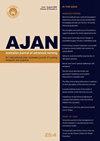Qualitative determination of occupational risks among operating room nurses
IF 1.3
4区 医学
Q3 NURSING
引用次数: 1
Abstract
Objective: The purpose of this study was to determine the occupational risks faced by operating room nurses, their working conditions and health problems, and the protective measures adopted. Background: Since operating rooms are high-risk environments, the nurses working in them are exposed to correspondingly greater health risks. Method: This qualitative descriptive study design involved 17 operating room nurses and was performed in a public hospital in Turkey. Data were collected by the author during face-to-face interviews using a semi-structured form constructed on the basis of the study aims. Theme establishment continued until new data emerged from the analysis of all interviews. Data were then subjected to qualitative content analysis. Results: Three main themes were determined in the study, worker safety, working conditions, and training. At interview, operating room nurses reported being exposed to several occupational risks, including radiation, sharp implements, long working hours, and working standing up. They also reported experiencing, or were anxious about encountering in the future, various health problems associated with these risks. They also identified activities associated with education and protective measures as inadequate. Discussion and conclusion: Several occupational risk factors in the operating room environment adversely affect the health of nurses working in the unit. We recommend that standards aimed at protecting against occupational risks be applied on a regular basis in order to preserve the personal health and safety of operating room staff. Implication for nursing and health policy: Nurses are responsible for the constant care of their patients under all conditions and environments but may face the risk of compromise of their own health as a result. Training, certification, and nursing policies aimed at protecting the health of employees in clinical settings should be implemented. What is already known about the topic? Operating room nurses are known to experience severe health problems arising from their working environment. Many nurses have to cope or live with these health problems. What this paper adds: The study reveals the need for operating room nursing education programs. It also stresses the importance of legislation and monitoring to ensure a safe working environment for nurses in Turkey.手术室护士职业风险的定性分析
目的:本研究旨在了解手术室护士面临的职业风险、工作条件和健康问题,以及采取的防护措施。背景:由于手术室是高风险的环境,在手术室工作的护士面临着相应更大的健康风险。方法:这项定性描述性研究设计涉及17名手术室护士,在土耳其一家公立医院进行。数据由作者在面对面访谈中使用基于研究目的构建的半结构化表格收集。主题的确立一直持续到对所有访谈的分析得出新的数据。然后对数据进行定性内容分析。结果:研究确定了三个主要主题:工人安全、工作条件和培训。在采访中,手术室护士报告说,他们暴露在几种职业风险中,包括辐射、尖锐的工具、长时间工作和站立工作。他们还报告说,他们正在经历或担心未来会遇到与这些风险相关的各种健康问题。他们还指出,与教育和保护措施有关的活动不够充分。讨论与结论:手术室环境中的几个职业风险因素对本单位护士的健康产生了不利影响。我们建议定期实施旨在防范职业风险的标准,以保护手术室工作人员的个人健康和安全。护理和健康政策的含义:护士有责任在所有条件和环境下持续照顾患者,但可能因此面临损害自身健康的风险。应实施旨在保护临床环境中员工健康的培训、认证和护理政策。关于这个话题已经知道了什么?众所周知,手术室护士在工作环境中会遇到严重的健康问题。许多护士不得不应付或生活在这些健康问题中。这篇论文补充道:这项研究揭示了手术室护理教育计划的必要性。它还强调了立法和监督的重要性,以确保土耳其护士有一个安全的工作环境。
本文章由计算机程序翻译,如有差异,请以英文原文为准。
求助全文
约1分钟内获得全文
求助全文
来源期刊
CiteScore
2.30
自引率
7.10%
发文量
27
审稿时长
>12 weeks
期刊介绍:
The Australian Journal of Advanced Nursing publishes a wide variety of original research, review articles, practice guidelines, and commentary relevant to nursing and midwifery practice, health- maternity- and aged- care delivery, public health, healthcare policy and funding, nursing and midwifery education, regulation, management, economics, ethics, and research methodology. Further, the journal publishes personal narratives that convey the art and spirit of nursing and midwifery.
As the official peer-reviewed journal of the ANMF, AJAN is dedicated to publishing and showcasing scholarly material of principal relevance to national nursing and midwifery professional, clinical, research, education, management, and policy audiences. Beyond AJAN’s primarily national focus, manuscripts with regional and international scope are also welcome where their contribution to knowledge and debate on key issues for nursing, midwifery, and healthcare more broadly are significant.

 求助内容:
求助内容: 应助结果提醒方式:
应助结果提醒方式:


